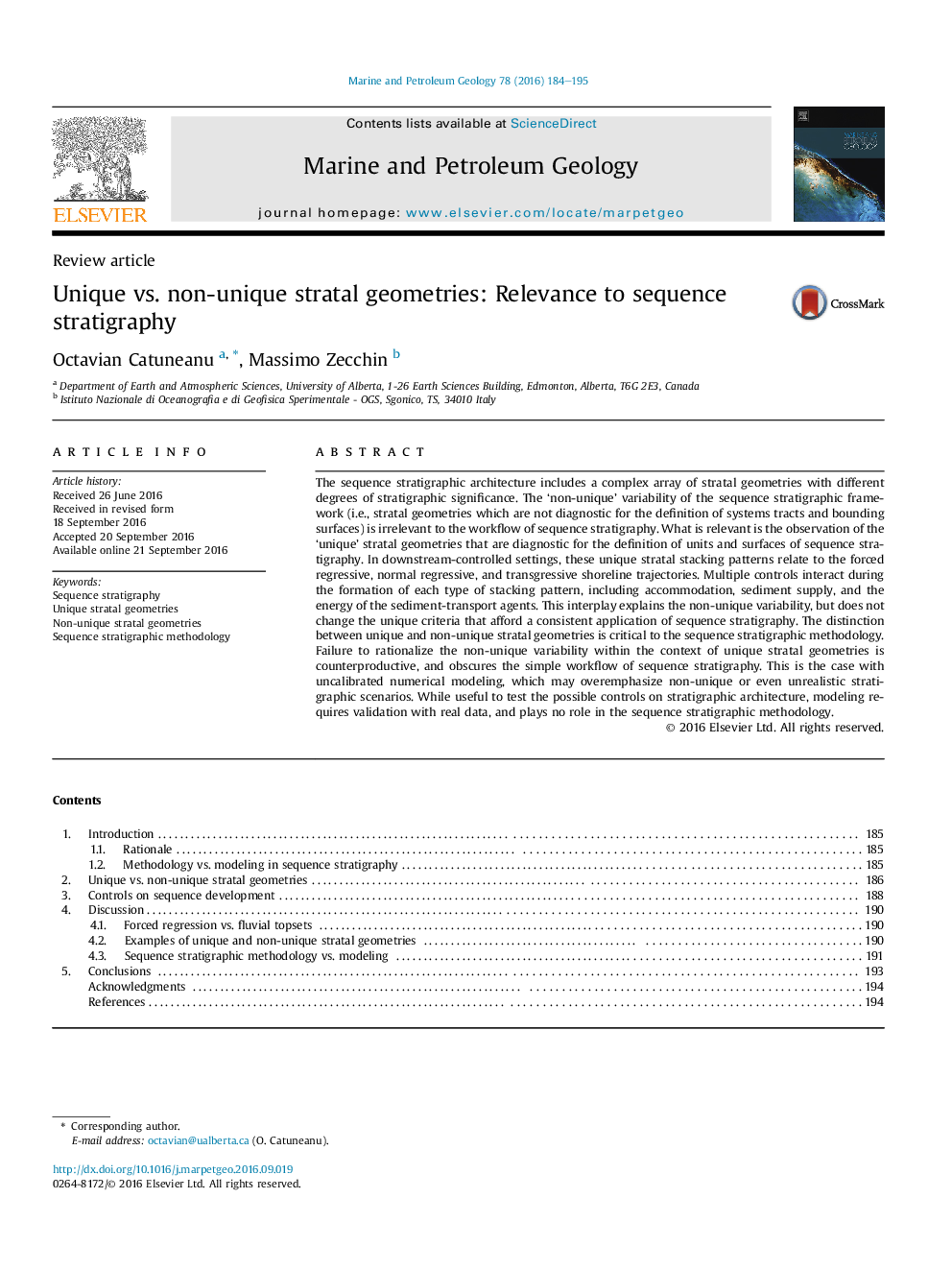| Article ID | Journal | Published Year | Pages | File Type |
|---|---|---|---|---|
| 6434379 | Marine and Petroleum Geology | 2016 | 12 Pages |
The sequence stratigraphic architecture includes a complex array of stratal geometries with different degrees of stratigraphic significance. The 'non-unique' variability of the sequence stratigraphic framework (i.e., stratal geometries which are not diagnostic for the definition of systems tracts and bounding surfaces) is irrelevant to the workflow of sequence stratigraphy. What is relevant is the observation of the 'unique' stratal geometries that are diagnostic for the definition of units and surfaces of sequence stratigraphy. In downstream-controlled settings, these unique stratal stacking patterns relate to the forced regressive, normal regressive, and transgressive shoreline trajectories. Multiple controls interact during the formation of each type of stacking pattern, including accommodation, sediment supply, and the energy of the sediment-transport agents. This interplay explains the non-unique variability, but does not change the unique criteria that afford a consistent application of sequence stratigraphy. The distinction between unique and non-unique stratal geometries is critical to the sequence stratigraphic methodology. Failure to rationalize the non-unique variability within the context of unique stratal geometries is counterproductive, and obscures the simple workflow of sequence stratigraphy. This is the case with uncalibrated numerical modeling, which may overemphasize non-unique or even unrealistic stratigraphic scenarios. While useful to test the possible controls on stratigraphic architecture, modeling requires validation with real data, and plays no role in the sequence stratigraphic methodology.
